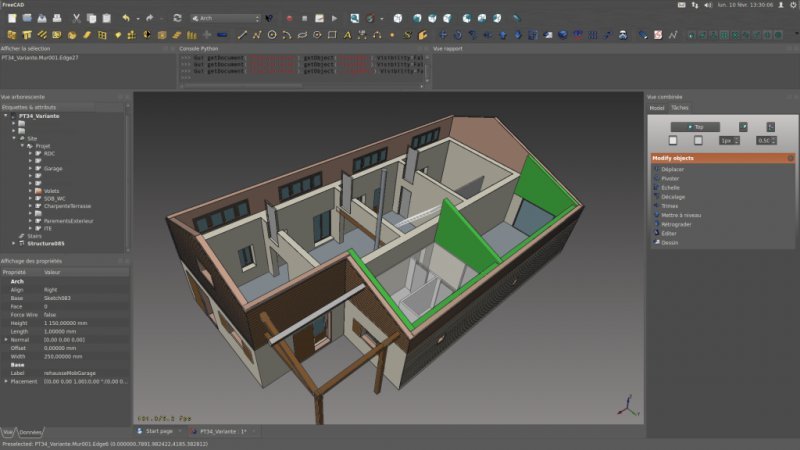In today’s technologically-driven world, innovations are not always conspicuous. With the advent of invisible www.twitterpeek.com/ technologies, the landscape of our daily lives is undergoing a subtle yet profound transformation. These technologies, while not always apparent, play a crucial role in shaping our interactions, enhancing efficiency, and redefining convenience.
Introduction to Invisible Technologies
Invisible technologies refer to the integration of advanced functionalities into everyday objects and systems, often without overtly visible components. These innovations aim to seamlessly integrate into our lives, providing enhanced capabilities while minimizing disruption.
Examples of Invisible Technologies
Smart Home Devices
One of the most prominent examples of invisible technologies is the proliferation of smart home devices. From thermostats to lighting systems, these gadgets operate in the background, automating tasks and adapting to user preferences without requiring direct input.
Wearable Technology
Wearable devices such as smartwatches and fitness trackers have become ubiquitous, offering users insights into their health and daily activities. Despite their compact form factor, these gadgets leverage sophisticated sensors and algorithms to provide actionable data.
Biometric Authentication
Biometric authentication methods, including fingerprint and facial recognition, exemplify the seamless integration of technology into everyday interactions. By utilizing unique physiological traits, these systems offer secure and convenient access to devices and services.
How Invisible Technologies Impact Daily Life
Convenience and Efficiency
One of the primary benefits of invisible technologies is the enhancement of convenience and efficiency. By automating routine tasks and adapting to user behavior, these innovations streamline daily workflows and alleviate mundane chores.
Privacy Concerns
However, the widespread adoption of invisible technologies raises concerns regarding privacy and data security. As these devices collect and analyze vast amounts of personal information, questions arise regarding data ownership, consent, and potential misuse.
Accessibility Benefits
Invisible technologies also offer significant benefits in terms of accessibility, enabling individuals with disabilities to navigate the physical and digital world more seamlessly. From voice-activated assistants to tactile feedback systems, these innovations empower users with diverse needs.
Invisible Technologies in Business
Improving Workplace Productivity
In the corporate sector, invisible technologies play a vital role in optimizing workflows and enhancing productivity. From automated scheduling algorithms to AI-powered analytics platforms, these tools enable organizations to operate more efficiently and adapt to evolving market dynamics.
Enhancing Customer Experiences
Moreover, businesses leverage invisible technologies to deliver personalized and immersive customer experiences. Through data-driven insights and predictive algorithms, companies can anticipate customer needs and tailor their products and services accordingly.
Data Analytics and Decision-Making
Invisible technologies also revolutionize data analytics and decision-making processes, enabling organizations to extract actionable insights from vast datasets. By leveraging machine learning algorithms and predictive modeling techniques, businesses can make informed decisions and drive innovation.
Challenges and Limitations
Technological Limitations
Despite their potential, invisible technologies face inherent limitations, including technical constraints and interoperability issues. The complexity of integrating disparate systems and ensuring seamless user experiences poses significant challenges to developers and manufacturers.
Ethical Considerations
Moreover, the proliferation of invisible technologies raises ethical considerations regarding surveillance, consent, and societal impact. As these innovations become increasingly integrated into our lives, policymakers and stakeholders must address concerns related to autonomy, accountability, and equity.
Security Risks
Additionally, invisible technologies introduce new security risks and vulnerabilities, potentially exposing users to cyber threats and data breaches. From IoT devices to biometric authentication systems, ensuring robust security measures is paramount to safeguarding sensitive information and preserving trust.
Future Trends in Invisible Technologies
Integration with Artificial Intelligence
Looking ahead, the convergence of invisible technologies and artificial intelligence promises to unlock new possibilities in automation, personalization, and predictive analytics. From intelligent assistants to autonomous systems, AI-powered solutions will continue to reshape our interactions with technology.
Advancements in Nanotechnology
Furthermore, advancements in nanotechnology hold immense potential for the development of invisible technologies with unprecedented capabilities. From nano-scale sensors to self-healing materials, these innovations will redefine our understanding of what is possible in the realm of technology.
Potential Societal Impacts
However, as invisible technologies become more pervasive, their societal impacts will become increasingly pronounced. From workforce displacement to ethical dilemmas, navigating the implications of these innovations will require careful consideration and proactive measures to mitigate risks and maximize benefits.
Conclusion
In summary, invisible technologies represent a paradigm shift in the way we interact with and perceive technology. From enhancing convenience and efficiency to raising complex ethical and societal questions, these innovations have far-reaching implications for individuals, businesses, and society at large. As we continue to embrace and integrate invisible technologies into our lives, it is essential to strike a balance between innovation and responsibility, ensuring that these advancements serve the greater good while upholding fundamental principles of privacy, security, and equity.





